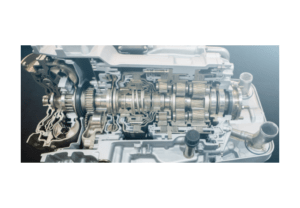Your vehicle’s transmission is one of its most important components. Without it, your car wouldn’t be able to shift gears, and you wouldn’t be able to drive anywhere. That’s why it’s so important to learn how to maintain your transmission properly. In this post, we’ll discuss some of the most important steps you can take to keep your transmission in good working order.
Contents
Check and Change the Transmission Fluid Regularly

Transmission fluid is essential for lubricating the moving parts inside your transmission. Over time, the fluid can become contaminated with dirt, debris, and other contaminants. If left unchecked, this can cause serious damage to your transmission. That’s why it’s important to check your transmission fluid regularly and change it when necessary.
To check the fluid level, start by locating the dipstick under the hood. This is usually labeled “transmission.” With the engine running and the transmission in “park,” pull out the dipstick and wipe it clean with a rag. Then reinsert it and pull it out again. The fluid level should be between the two marks on the dipstick. If it’s low, add more fluid, but be careful not to overfill it.
The color of the fluid can also give you an indication of its condition. Transmission fluid should be a bright red color. If it’s brown or black, that’s a sign that it’s contaminated and needs to be changed.
The frequency with which you should change your transmission fluid can vary depending on the make and model of your vehicle. As a general rule, however, it’s a good idea to change the fluid every 30,000 to 60,000 miles. You can find the manufacturer’s recommended interval in your vehicle’s owner’s manual.
If you’re comfortable doing it yourself, changing the transmission fluid is a relatively easy process. Simply remove the drain plug on the transmission pan and let the fluid drain out. Then, replace the drain plug and refill the transmission with fresh fluid. If you’re not comfortable doing it yourself, take your car to a trusted mechanic to have it done.
Inspect and Replace the Transmission Filter
The transmission filter is another important component that should be inspected and replaced periodically. The filter is responsible for removing contaminants from the fluid before it enters the transmission. Over time, the filter can become clogged with dirt and debris, which can cause the transmission to overheat and fail.
To replace the filter, start by locating it on the transmission. The location can vary depending on the make and model of your vehicle, but it’s usually found on the underside of the transmission. Once you’ve located it, remove the bolts that hold it in place and carefully lift it out.
Next, install a new filter and gasket. Make sure that the gasket is properly aligned and that the bolts are tightened to the manufacturer’s specifications. Finally, refill the transmission with fresh fluid.
Keep the Transmission Cool
Overheating is one of the most common causes of transmission failure. When the transmission overheats, the fluid breaks down and loses its ability to lubricate the moving parts inside. This can cause the transmission to slip, shift poorly, or fail altogether.
To keep your transmission cool, start by checking the coolant level in your engine. The transmission cooler is usually located inside the radiator, so if your engine is low on coolant, it can cause the transmission to overheat as well. If you notice that your engine is running hot or that your coolant level is low, take your car to a mechanic to have it checked.
Another way to keep your transmission cool is to avoid towing heavy loads or driving in extreme heat. If you do need to tow something, make sure that you do not overwork your transmission.
Use the Right Transmission Fluid
Using the correct type of transmission fluid is essential to the proper functioning of your transmission. Different types of transmissions require different types of fluid, so it’s important to consult your owner’s manual to determine which type of fluid is recommended for your vehicle. Using the wrong type of fluid can cause serious damage to your transmission and lead to costly repairs.
If you accidentally use the wrong type of fluid, don’t panic. Drain the transmission fluid and replace it with the correct type as soon as possible. Continuing to use the wrong type of fluid can cause significant damage to your transmission.
Be Gentle with Your Transmission
Finally, it’s important to be gentle with your transmission. Avoid rough shifting, excessive idling, and other habits that can put unnecessary strain on your transmission. When shifting gears, be sure to come to a complete stop before changing from reverse to drive, or vice versa. This will prevent undue stress on the transmission.
Also, avoid accelerating too quickly from a standing start, as this can cause the transmission to shift roughly. If you’re driving a manual transmission, be sure to fully depress the clutch pedal before shifting gears. Failure to do so can cause the transmission to grind and wear out prematurely.
FAQ’s
1. What maintenance does a transmission need?
A transmission service is essential to keep your car running smoothly. In addition to replacing old and dirty transmission fluid, it includes inspecting the sump pump or pan for any wear-and-tear, swapping out a clogged filter with a brand new one, as well as cleaning up and securely reattaching the pan along with an all-important fresh gasket.
2. What is the average life of a transmission?
With consistent TLC, it’s possible to coax your car’s transmission all the way up to 300,000 miles. Regular checkups and regularly replacing fluid can help keep things running smoothly – but if you neglect maintenance duties for too long, you may find yourself with difficulties at just 100K.
3. What kills a transmission?
- Overheat your vehicle as often as possible
- Maintain improper fluid levels
- Never change the fluid
- Use the incorrect fluid type
- Drag race from light to light
- Always stop abruptly
- Leave the shift lever in park without the parking brake on
- Downshift to “brake” at traffic lights
4. How much does a full transmission service cost?
Replacing a transmission in your vehicle can be an expensive and labor-intensive job – costing anywhere from $1,800 to $3,400 for brand-new parts plus at least another few hundred dollars for the associated installation costs. But it’s critical that you do not neglect this essential component as it plays a vital role in keeping your car running reliably.
Conclusion
Maintaining your transmission may seem like a daunting task, but it’s essential to the long-term health of your vehicle. By following the tips outlined in this post, you can help ensure that your transmission stays in good working order for years to come.
Remember to check and change the fluid regularly, inspect and replace the filter, keep the transmission cool, use the right fluid, and be gentle with your transmission. With a little bit of effort and attention, you can keep your transmission running smoothly and avoid costly repairs down the road.
